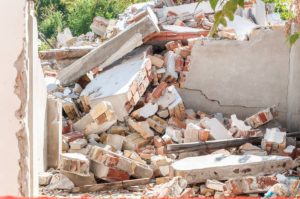Kolkata Residents Demand Crackdown — Residents of Hindustan Park and nearby areas in South Kolkata have formally requested the West Bengal Pollution Control Board (WBPCB) to take concrete steps to curb rampant noise pollution caused by ongoing construction activities. While the board has made strides in tackling dust pollution, residents now want similar attention given to the pervasive noise that’s disrupting their daily lives.

Persistent Noise Causing Distress
In a written appeal to WBPCB Chairman Kalyan Rudra, the Eleven Hindustan Park Owners’ Association described how the relentless sound from jackhammers and sheet piling machines is making everyday life unbearable. “Our homes feel like construction zones,” said Nina Ghosh, a long-time resident and practicing chartered accountant. The noise often begins early in the morning and stretches into the evening, invading what was once a peaceful neighbourhood.
Association president and environmental activist Pradeep Kakkar emphasized that this is not an isolated issue. “Such disruptions are now common across the city, with increasing construction and little to no enforcement of noise control norms,” he stated.
Kolkata Residents Demand Crackdown: Residents’ Suggestions
The association’s letter includes specific suggestions for managing the issue:
- Use of sound barriers or temporary acoustic curtains at active construction sites
- Restrictions on the use of high-decibel equipment during designated quiet hours
- Mandatory noise-reducing equipment like mufflers or dampening systems for jackhammers and drilling machines
- Public display of decibel readings at major construction sites to increase accountability
These proposals build on the success of dust control measures implemented at the state level last year, including water sprinkling, tarpaulin covers, and pollution monitors at large building sites.
WBPCB Responds
Responding to the complaint, Chairman Kalyan Rudra acknowledged the suggestions and confirmed that the board is willing to collaborate with research institutions to explore technical solutions. However, he clarified that enforcement falls primarily under the jurisdiction of municipal authorities and local police.
“We have already provided decibel meters to local police stations. Citizens can lodge complaints, and the police are empowered to take immediate action,” Rudra stated.
Legal Guidelines on Construction Noise
As per the Noise Pollution (Regulation and Control) Rules, 2000, the permissible noise level in residential areas is:
- 55 dB (A) during the daytime (6 a.m. to 10 p.m.)
- 45 dB (A) at night (10 p.m. to 6 a.m.)
Tools like jackhammers and hydraulic hammers used in piling can generate up to 120 dB, exceeding acceptable limits by a wide margin. Under these rules, any noise beyond prescribed limits can be classified as public nuisance, and violators may be prosecuted under the Environment Protection Act, 1986, and Indian Penal Code Sections 268 and 290.
Health Concerns from Noise Pollution
Long-term exposure to high-decibel construction noise has been linked to:
- Hearing loss
- Sleep disruption
- Increased blood pressure
- Irritability and stress
- Impaired learning in children and cognitive dysfunction in elderly residents
These health issues have made it urgent for authorities to reevaluate how urban construction projects are regulated, especially in densely populated residential zones like South Kolkata.
Noise Management Solutions Available
Experts in urban planning and environmental acoustics recommend several interventions:
- Deploy mobile noise barriers made of sound-absorbing materials
- Implement real-time noise monitoring with automated alerts to authorities
- Enforce restricted operation hours for piling and drilling
- Integrate noise insulation policies into building and demolition permits
Municipalities in cities like Mumbai and Bengaluru have begun experimenting with such technologies, and similar approaches could be piloted in Kolkata with support from the WBPCB.
Civic and Legal Responsibility
According to Rule 7 of the Noise Rules, local bodies (municipal corporations) and the police are responsible for controlling noise pollution at the ground level. While the WBPCB sets the guidelines and monitors ambient noise levels, day-to-day enforcement requires cooperation between government agencies and citizen welfare groups.
Citizens can file complaints via:
- Local police station (under public nuisance provisions)
- WBPCB’s grievance redressal platform
- Kolkata Municipal Corporation’s 24×7 helpline and mobile app
Related Government Sources & Links:
- West Bengal Pollution Control Board – Noise Pollution Guidelines
- Central Pollution Control Board – Noise Pollution Control Measures
- Noise Pollution (Regulation and Control) Rules, 2000 – MoEF&CC
- Environment Protection Act, 1986 – Full Text
Conclusion
As Kolkata’s skyline continues to expand with high-rise construction projects, it is imperative that authorities consider the acoustic impact of urban development. Residents of Hindustan Park have taken the first step by voicing their grievances and offering practical solutions. Now, it is up to regulatory bodies and civic authorities to act on those suggestions and restore some peace to Kolkata’s increasingly noisy neighbourhoods.
Also read: Home | Channel 6 Network – Latest News, Breaking Updates: Politics, Business, Tech & More

